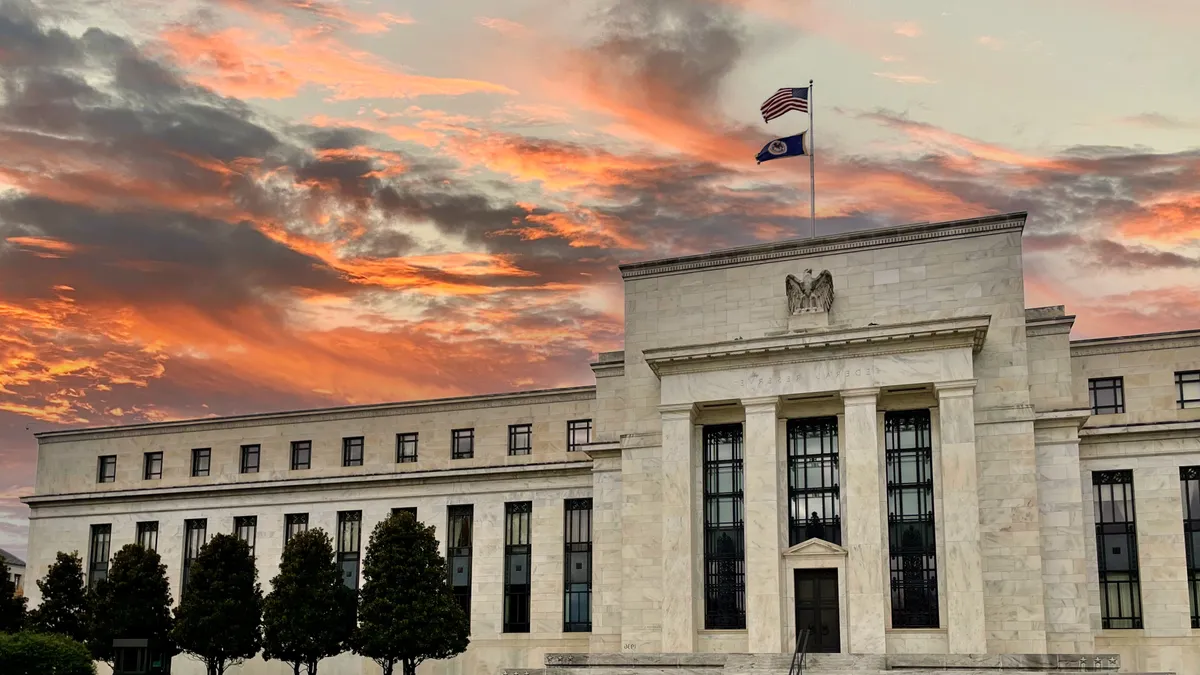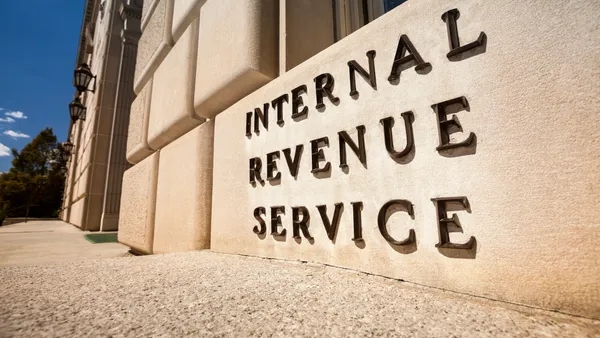Dive Brief:
- Data on unemployment claims across all 50 states underscore stability in the U.S. labor market, researchers at the Federal Reserve Bank of San Francisco said in a report as dissenting policymakers assert that signs of job market weakness call for a cut to borrowing costs at the Fed’s mid-September meeting.
- The researchers traced unemployment insurance claims across the states and over recent decades, applying a measure of recession risk known as the Sahm rule. They found that the U.S. faced a recession when 30 or more states suffered an increase in unemployment at least 0.5 percentage point above the lowest three-month average during the previous 12 months.
- “Applying this analysis to the latest data suggests that the labor market has remained stable through mid-2025,” researchers Rohit Garimella, Òscar Jordà and Sanjay Singh said in a study released Monday.
Dive Insight:
Release of the report follows dissenting votes by two policymakers to a Fed decision on July 30 holding the main interest rate steady rather than trimming it to counteract signs of softening in the labor market. It was the first dissent by two Fed governors since 1993.
Publication of the report also precedes a two-day meeting of central bankers from the U.S. and other countries beginning Thursday. The gathering in Jackson Hole, Wyoming, is titled “Labor Markets in Transition.”
Some job market data has signaled weakness since May. For example, the three-month average in U.S. payroll gains from May through July slumped to 35,000 from an average of 127,000 from February through April.
Fed Governors Michelle Bowman and Christopher Waller dissented last month saying that the central bank should avert further weakening in employment by trimming the federal funds rate by a quarter percentage point from its current level between 4.25% and 4.5%.
Fed Chair Jerome Powell disagreed. “Labor market conditions have remained solid” while inflation “remains somewhat elevated relative to our 2% long-run goal,” he said on July 30 during a post-meeting news conference.
“The economy is not performing as if a restrictive policy is holding it back,” he said, noting that unemployment remains low.
Other Fed officials have recently echoed Powell, cautioning that the central bank should not cut borrowing costs before ensuring that inflation is steadily falling toward the central bank’s 2% long-run target.
Atlanta Fed President Raphael Bostic said Wednesday that policymakers should take their time to assess fresh data before changing the benchmark interest rate.
The health of the labor market — with the unemployment rate at an unusually low 4.2% — gives policymakers “the luxury” to take the time needed to clarify the best path forward for monetary policy, Bostic said.
“You’ve got a labor market that is quite strong, and so our maximum employment mandate is not at risk in the same way that the inflation mandate is,” he said. “I feel we have some space now.”
The new Labor Market Stress Indicator provides deeper insights than aggregate U.S. employment data by accounting for differences among U.S. regions, the San Francisco Fed researchers said.
“National averages of economic indicators hide important regional diversity,” they said, noting that since mid-2022 unemployment has increased 2 percentage points in Colorado while barely moving in Hawaii.
“Experience shows that recessions become self-reinforcing when job losses spread broadly across states and sectors,” the researchers said. “If economic weakness remains isolated, healthy regions can offset those that are struggling through tourist inflows, interstate supply chains and federal transfers, thus preventing a nationwide contraction.”














